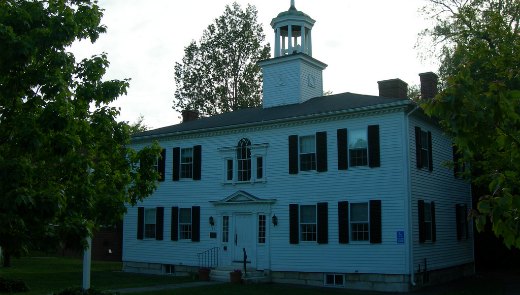
Berkshire County, the westernmost slice of Massachusetts bordered by New York, Connecticut, and Vermont, is a storied vacation spot year-round, but especially in this season. The summer home of the Boston Symphony is here at Tanglewood; nearby is Jacob’s Pillow, a seasonal dance festival. Famed residences and museums devoted to Edith Wharton, Herman Melville and Norman Rockwell are here, precious colonial-era townships featuring historic churches with white steeples and Victorian stone, and lovely, winding byways providing charming New England vistas at every turn.
The year 1761 was a significant one in this part of the country: The towns of Pittsfield and Great Barrington, both sitting along the picturesque Housatonic River, were founded, making 2011 their 250th anniversary. A visitor may be able to catch special events celebrating this milestone. Pittsfield, the traditional county seat and former home of a large GE plant, which polluted the river generously with industrial effluvient, is still recovering from massive job loss. Great Barrington, in the southwestern corner of the state, is the 1868 birthplace and early home of famed writer, scholar, and civil rights leader W. E. B. DuBois, who in his tenth decade of life joined the Communist Party USA, moved to Ghana, and died there. His African grave cites his Great Barrington origins. The rest of his family – wife, children and others – are buried at the Mahaiwe Cemetery in Great Barrington. The town also prides itself as the seat of a seminal 1774 action of organized resistance to British rule.
This summer the Barrington Stage Company (located in Pittsfield despite its name) is offering Mark St. Germain’s new play The Best of Enemies, inspired by a book of the same name by Osha Gray Davidson. The play recounts, with much pathos and also much humor, the story of an unlikely friendship between Ann Atwater, a black civil rights leader in Durham, North Carolina, in the early years of desegregation, and a dyed-in-the-wool Klansman, C. P. Ellis. Their hearts, full of hate and based on centuries of rage, gradually turn to hope as they contemplate a rewarding future for all our country’s children. The play runs through August 6.
At the very northwest corner of the state, in Williamstown, home of Williams College and the famous Williamstown Theatre, stands the Sterling and Francine Clark Art Institute. One of the nation’s premier small museums, the Clark permanently houses an impressive collection of American and European artistic gems.
Through October 2, the Clark is featuring a magnificent exhibition with borrowed work from dozens of other collections worldwide, called “Pissarro’s People.” If you are anywhere within striking distance of the Clark, run, do not walk, to revel in this stunner of a show. Camille Pissarro (1830-1903), a Caribbean-born French painter based in Paris and environs from 1855 on, is recalled as the “dean of Impressionism,” most commonly for his landscapes. But this exhibition concentrates on Pissarro’s politics as expressed in his art, focusing more on people than scenery. Perhaps more properly, people in their natural environment as life should be, a normal, voluntary integration of self-directed work and leisure in the fields and orchards, not meant for profit but for sustainability and egalitarianism. For in his day, Pissarro was a committed and energetic anarchist, a follower of Proudhon and Kropotkin. His apple-pickers and wheat-gatherers were no employees or farmhands or serfs on the land, but free men and women who cherished their communal rights to love, to create, and live without shame and want.
Pissarro expressed his vision of society in an 1889 folio of drawings called Turpitudes Sociales (Social Disgraces), a virtual catalogue of the evils of capitalist society, from drunkenness to homelessness, to dangerous working conditions and suicide, to “banksterism” – speculation and high finance on the tophatted stock market. His art prefigures the protest of Daumier, George Grosz, William Gropper, Robert Minor, Ben Shahn, Charles Keller, and others. On the final page of his book comes the glorious Insurrection. Though his language may seem quaintly situated in 19th century Romanticism, Pissarro’s spirit soars to capture today’s headlines from Cairo, Tunis, Madison, and who knows, perhaps a factory or state capital near you.
At the Clark’s Stone Hill Center, just a minute’s drive or eight-minute forested walk away, you will find a trio of large-scale 21st century masterworks by Nigerian artist El Anatsui, who has taken thousands of bottle caps and liquor bottle casings, untold numbers of little wires threaded through tiny punched holes, and a brain full of references to alcohol, colonialism, the independence movement, and the rich tradition of African textiles, and woven flowing, almost free-associative wall hangings that remind a viewer of the lush and glowing paintings of Gustav Klimt. You can stand in awe before these inspired installations through October 16.
Photo: Old Berkshire County courthouse. Jimmy Emerson // CC 2.0












Comments